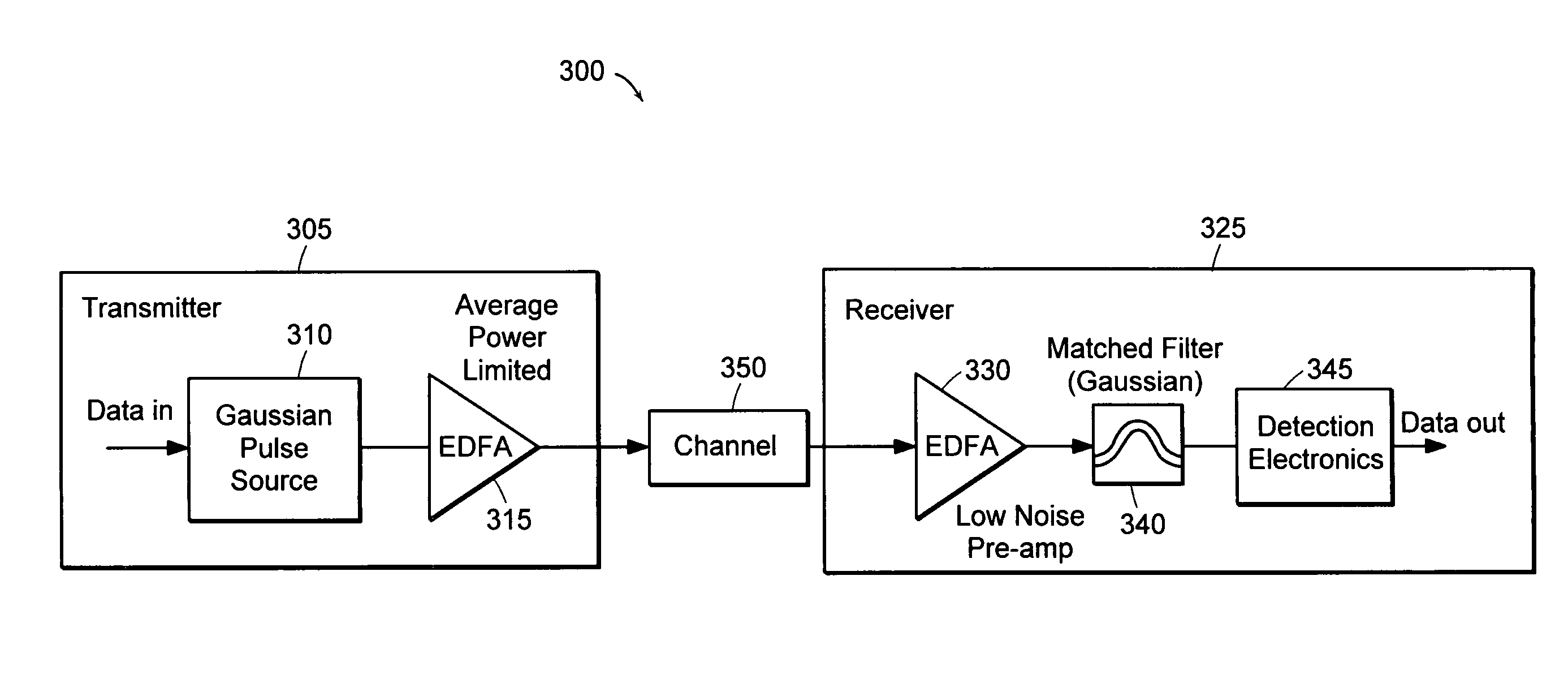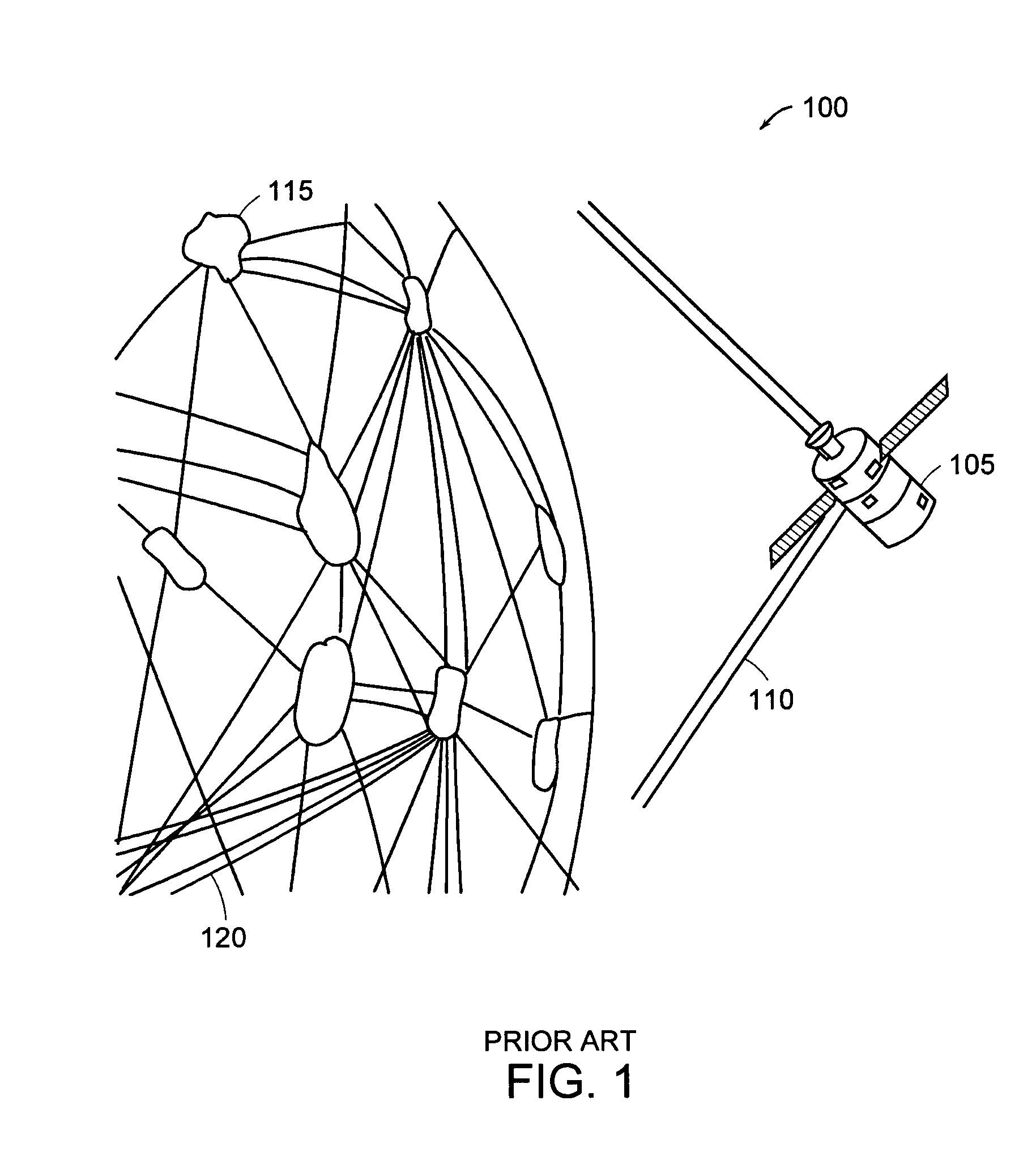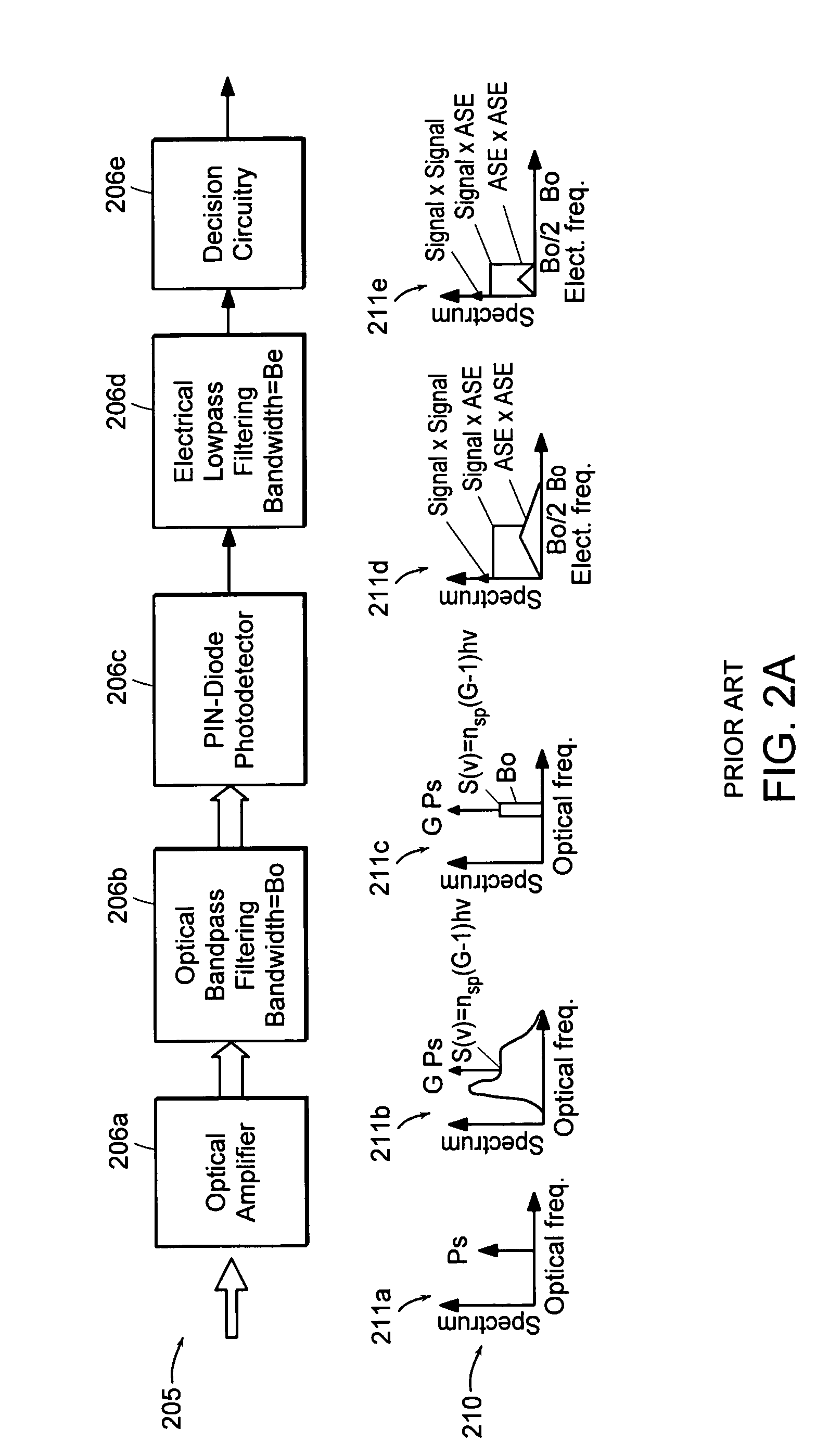Methods of achieving optimal communications performance
a communication performance and optimal technology, applied in the field of optimal communication performance, can solve problems such as limiting the overall system capacity, and achieve the effects of increasing the measurement resolution of impulse responses, extending the bandwidth of the measurement capacity, and expanding the bandwidth of the measurement system
- Summary
- Abstract
- Description
- Claims
- Application Information
AI Technical Summary
Benefits of technology
Problems solved by technology
Method used
Image
Examples
Embodiment Construction
[0066]A description of preferred embodiments of the invention follows.
[0067]FIG. 3A is a schematic diagram of an experimental setup 300 used to demonstrate a matched optical link. The setup 300 includes a transmitter 305, receiver 325, and variable attenuator 320 optically disposed between the transmitter 305 and receiver 325. The variable attenuator 320 may be used to emulate channel effects such as loss, dispersion, and non-linearities in a communication channel.
[0068]The transmitter 305 includes a distributed feedback (DFB) master laser 420 followed by two external Mach-Zehnder modulators (MZM) 430, 435 in series. In this particular embodiment, one of the two MZMs 430 is driven sinusoidally to carve out approximately Gaussian pulses, and the other of the two MZMs 435 imparts a 5 Gbps data on the pulse stream. The master laser 420 and MzMs 430, 435 are hereafter referred to as a Gaussian pulse source 310.
[0069]Following the Gaussian pulse source 310, the transmitter 305 includes a...
PUM
 Login to View More
Login to View More Abstract
Description
Claims
Application Information
 Login to View More
Login to View More - R&D
- Intellectual Property
- Life Sciences
- Materials
- Tech Scout
- Unparalleled Data Quality
- Higher Quality Content
- 60% Fewer Hallucinations
Browse by: Latest US Patents, China's latest patents, Technical Efficacy Thesaurus, Application Domain, Technology Topic, Popular Technical Reports.
© 2025 PatSnap. All rights reserved.Legal|Privacy policy|Modern Slavery Act Transparency Statement|Sitemap|About US| Contact US: help@patsnap.com



